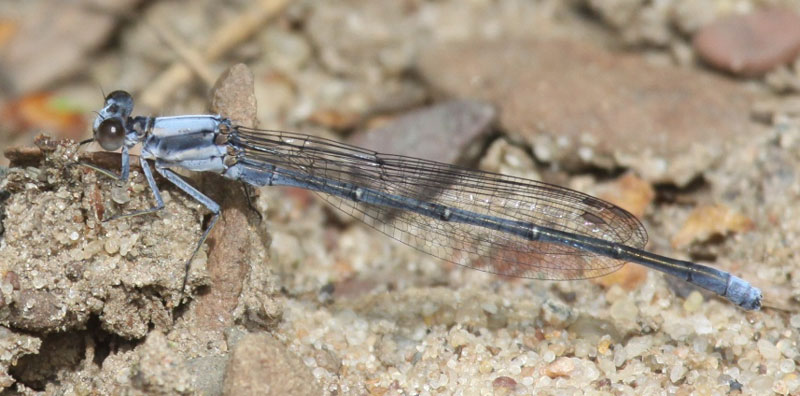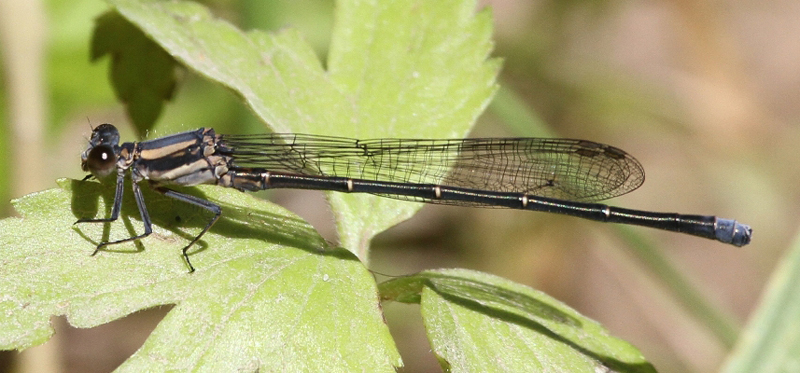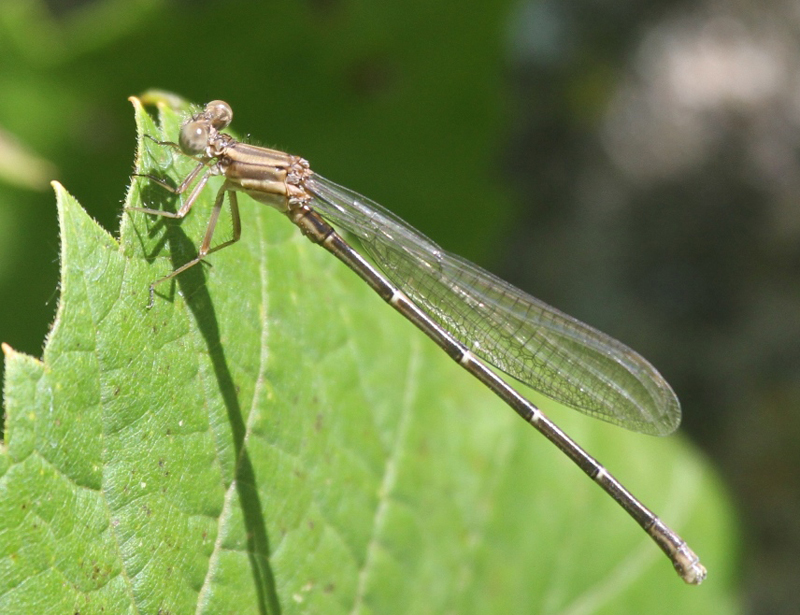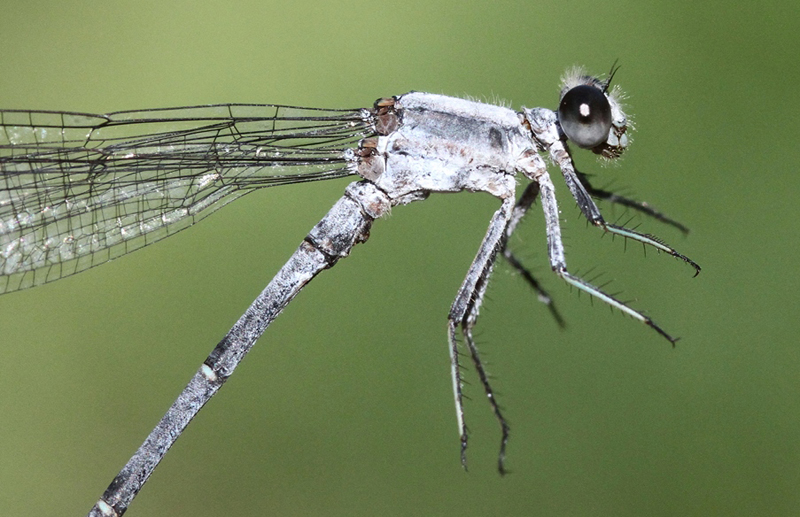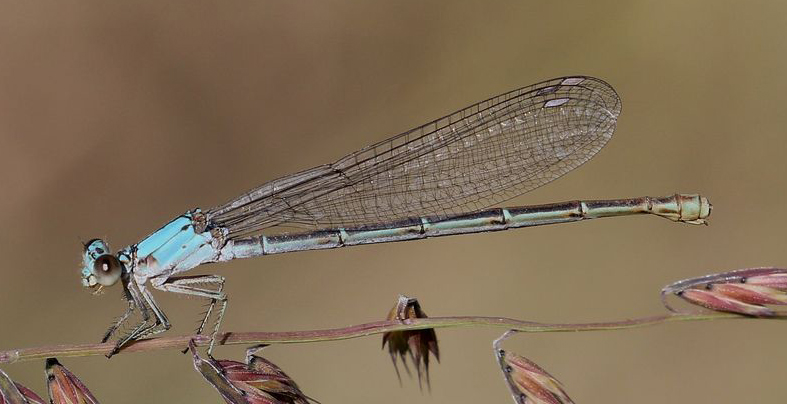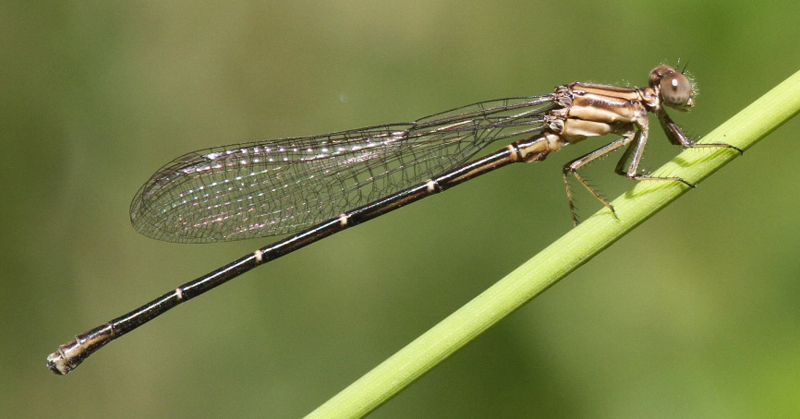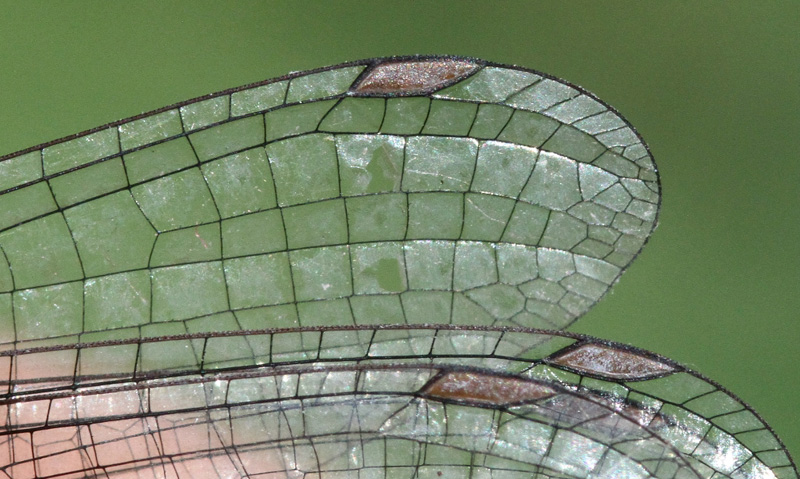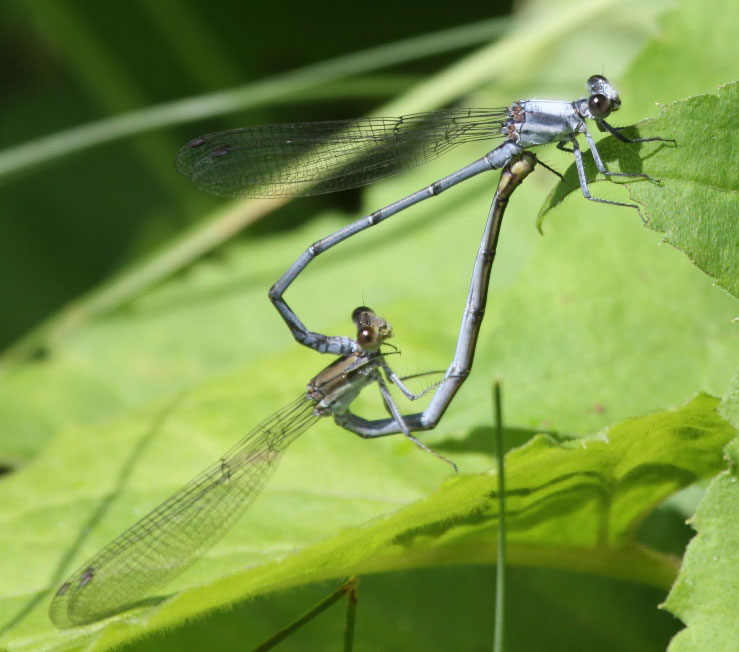




Coenagrionidae, Pond Damsel Family
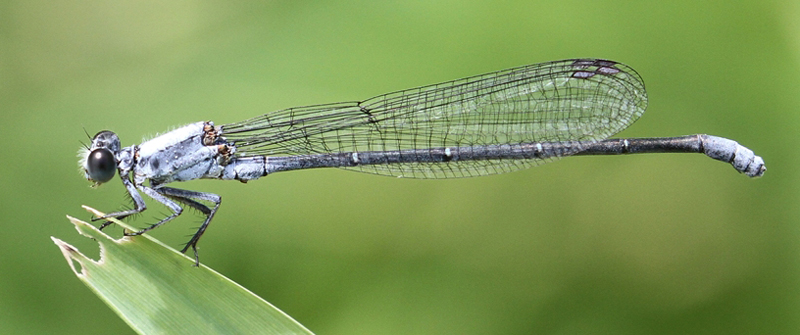
The dancers (Argia species) are sometimes similar in appearance to the bluets (Enallagma species) and may require in-hand examinations to separate them. Dancers can always be identified by the long setae on the front of their tibiae, which are twice as long as the intervening spaces. In all other pond damsels, these setae are only about as long as the intervening spaces. The females generally are duller than males and more difficult to identify. The "bouncy" flight of the dancers also distinguishes them from the bluets.
Status-Global/State:
Distinguishing Characteristics:
Varying from 1.5 to 1.7 inches in length, the powdered dancer is uniquely marked. The male has a chalky white thorax with dark stripes that blur with age. The abdomen is blackish with a pale gray tip. The eyes are dark. The female has blue and brown forms. The blue form female has a dark tip instead of a bright blue tip of the abdomen. The brown form female is lighter colored in some areas compared to the brown form blue-fronted dancer female. A key to separating female blue-fronted and powdered dancers is the number of cells below the stigma in the wing. As shown in the wing detail photo, female powdered dancers have two cells below the stigma where a blue-fronted dancer has one.
Description of Habitat/Range:
Found from central to eastern United States and southeastern Canada, the powdered dancer likes rocky rivers and lakes with rocky shores. It is common and widely distributed throughout Wisconsin.
Flight Season:
Typically from early June to late August in Wisconsin.
(Click on photos to enlarge)
